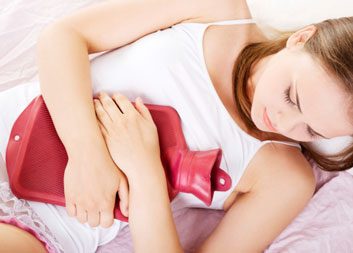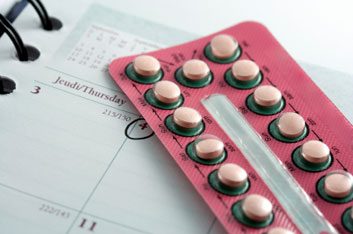
1. The ring
Up to 99 percent effective at preventing pregnancy, the ring releases two hormones that stop the ovaries from releasing an egg each month. It also thickens the cervical mucus making it difficult for sperm to enter the uterus. The ring cannot prevent sexually transmitted infections (STIs), so condom use is recommended if you have multiple sexual partners.
The problem: Ten percent of women experience increased vaginal discharge. For 20 percent of users, the ring can slip out of the vagina. In many cases, this expulsion is related to a uterine prolapse when weak pelvic floor muscles cause the uterus to drop into the vagina.
The solution: Dr. Amanda Black, chair of the Society of Obstetricians and Gynecologists of Canada’s Contraception Awareness Program, advises against using a pad each day to collect excessive discharge because it can cause vulva irritation. “If discharge is problematic, look at an alternative contraception method,” she says. If the ring slips out of the vagina, check with your medical provider to confirm that you’re inserting it correctly, and to rule out a uterine prolapse.

2. Intrauterine devices (IUDs)
Inserted into your uterus by a physician, IUDs are available in two different varieties: a copper IUD that is 99.4 percent effective, or a progesterone-based IUD (Mirena, or Jaydess). The Mirena brand is 99 percent effective against pregnancy. “Mirena is as effective as a tubal ligation (a surgical sterilization technique),” says Black. Mirena can stay inside your uterus for up to five years, while Jaydess has been approved for three years. IUDs cannot prevent STIs.
The problem: Extreme cramping and bleeding is sometimes associated with the copper IUD.
The solution: “Pain can often be managed with non-steroidal anti-inflammatory medications (NSAIDs), however, if you already have a history of heavy bleeding or cramping, you should shy away from a copper IUD,” says Black. If you can tolerate a hormonal birth control method, the Mirena IUD is a good option. “Mirena is associated with a decrease in menstrual bleeding and cramping,” says Black.

3. The Pill
Taking the Pill at the same time every day will maintain its 97 to 99 percent effectiveness. The Pill cannot prevent STIs.
The problem: Fluctuating estrogen levels cause headaches.
The solution: Skip the sugar pills and take the hormone-based pills continuously to keep your estrogen levels steady. Another solution – switch to a pill with less estrogen, or try a progesterone-based IUD. If your headaches cannot be controlled, or you have a history of migraines with aura, switch to a non-hormonal form of birth control such as a copper IUD, diaphragm, or female condom.

4. Diaphragm, or Cervical Cap
When used with spermicide, the diaphragm and cervical cap – both hormone-free contraceptives – are up to 87 percent effective against pregnancy. They cannot prevent STIs.
The problem: Frequent urinary tract infections (UTIs). Due to the positioning of the contraceptive device inside the vagina, it can generate pressure temporarily against the urethra. This pushing action can make it difficult to completely empty your bladder, leaving behind urine that can harbour UTI-causing bacteria.
The solution: To reduce the risk of a UTI, Black recommends that women urinate after sex – with the diaphragm/cap still in place. These devices must be worn for at least six hours post-intercourse to prevent pregnancy. Urinating will help flush away any bacteria that may have entered the urinary tract during sex.

5. Depo-Provera
Injected into your arm or buttock every 3 months by your health care provider, Depo-Provera’s hormone progestin provides 99.7 percent protection against pregnancy. Some users say that Depo-Provera reduces cramps and the length of their period.
The problem: Up to 60 percent of women on Depo-Provera have been shown to gain weight. An American study from 2009 found that women receiving Depo-Provera injections gained an average of 11 pounds over three years, and increased their body fat by three percent.
The solution: “Weight gain associated with Depo-Provera is thought to be due to appetite stimulation,” says Black. If good eating habits and portion control don’t drop the pounds, you should try another contraceptive method.

6. Female condoms
When used properly, the female condom can be 97 percent effective at preventing pregnancy. Hormone and latex-free – they’re made from polyurethane – female condoms can also halt STI exposure.
The problem: “Some women find it difficult to use,” says Black. Inserting the condom in the heat of the moment can feel “unsexy”. Some women report that the polyurethane material makes embarrassing noises during intercourse.
The solution: To keep sex interruption-free, insert the female condom up to 8 hours before intercourse. As for the noise issue, there’s no fix except to ignore it!
Related:
• 6 things you may not know about the Pill
• 5 reasons to do kegels regularly
• Is this the future of birth control?
